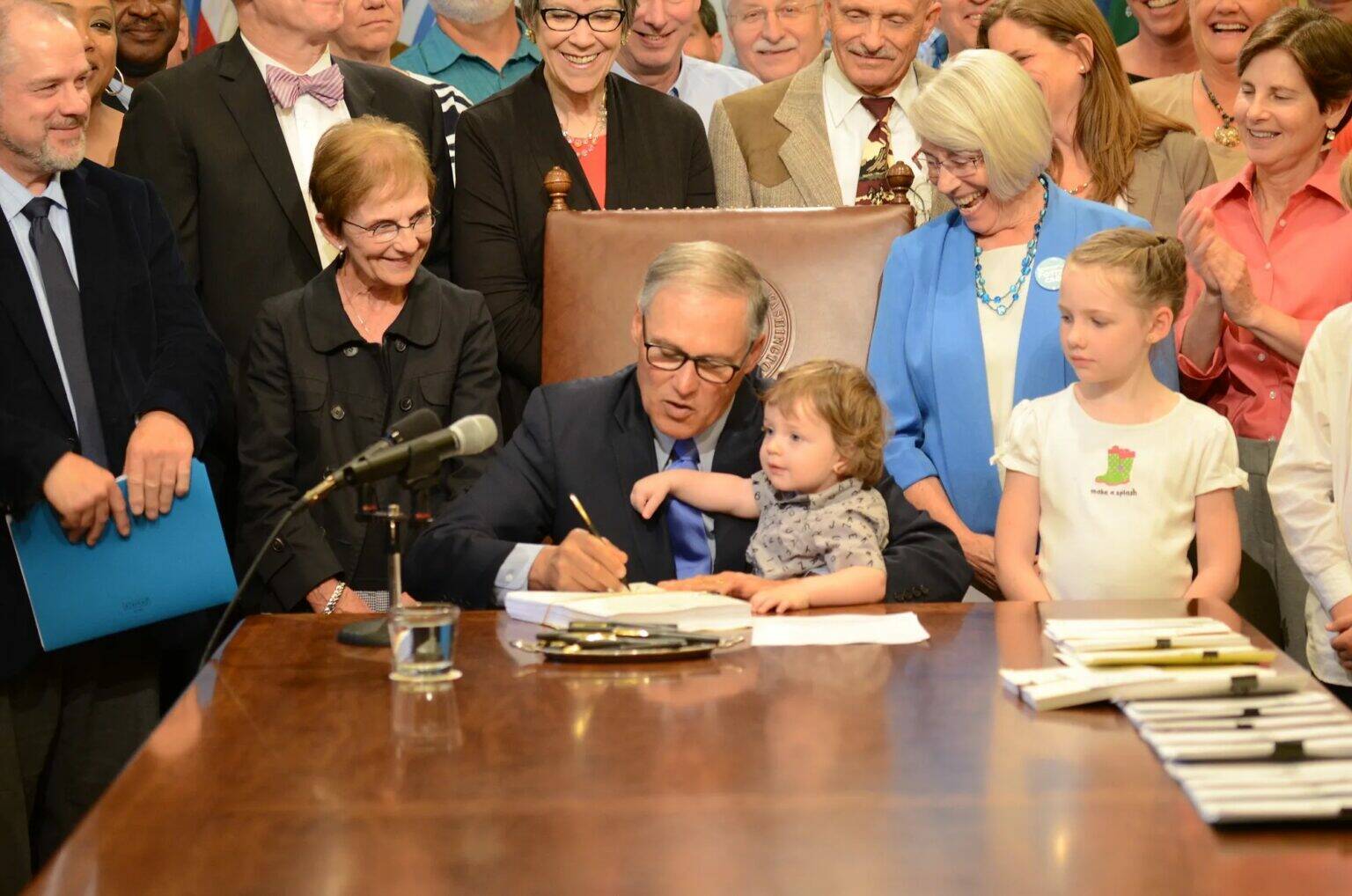The number of kids in Washington’s foster care system has dropped by nearly half since the Department of Children, Youth and Families was created in 2017, reflecting the agency’s push to keep families together.
There are now 4,971 children and youth in foster care in Washington, compared with 9,171 in 2018, the first full year the department existed. Previously, foster care was overseen by the Department of Social and Health Services.
That’s despite the number of child abuse and neglect reports requiring face-to-face responses remaining largely the same over the years: Nearly 92,000 calls to report suspected child abuse or neglect were made in 2023, compared to a little over 93,000 in 2018.
The intent of the new approach is to provide support services to families and reduce any risks of harm, rather than separating families, said Patrick Dowd, the Department of Children, Youth and Families ombuds.
Washington’s shift in priorities was accelerated by the passage of House Bill 1227, known as the Keeping Families Together Act, which said that homelessness, disability and poverty wouldn’t qualify as the sole reason to take kids away. HB 1227 went into effect in July 2023.
“Whenever possible, we should be keeping children in the home,” Dowd said. “The danger obviously is if, in the course of a [Child Protective Services] investigation, if the department is erring on the side of, ‘This is a close call but we’re not going to see court oversight:’ Are we leaving a child at risk?”
That’s a concern for many foster care advocates, who say the system still needs work. The Office of the Family and Children’s Ombuds reported an increasing number of deaths and “critical incidents” of children whose families were involved in the child welfare system in the previous year, from 77 in 2019 to 149 last year.
The report largely attributes the significant increase in near-deaths and deaths to the growing fentanyl epidemic.
In acknowledgment of that, lawmakers this year passed Senate Bill 6109 requiring courts to give “great weight” to the presence of opioids in the home when considering taking a child into foster care. Republicans pushed Democrats to go further, calling to lower the legal threshold and allow removal of children from any homes fentanyl is present in, but the amendment failed.
The department said reducing foster care intakes is also part of an effort to reduce racial disparities, as Native, Black and white children are more likely to be removed from their homes than Asian and Hispanic children.
The data on that is mixed: From 2018 to 2021, the ratio of intakes involving Black children has decreased slightly as the ratio of intakes involving white children has increased slightly, but Black children are still more likely to be moved into state care. Both white and Black children are still more likely to be removed from their homes than Asian and Hispanic children. Meanwhile, the ratio of Native children taken in by the state has steadily increased. Native communities in Washington are disproportionately impacted by the opioid epidemic.
In the agency’s Friday announcement, it touted its Thriving Families initiative, which involves a number of projects meant to reduce out-of-home placements, including clarifying removal standards for social workers consistent with changing laws and efforts to expand support services.
Support services the agency offers may include connecting parents to child care, family therapy, substance use disorder treatment or domestic violence services, said Nancy Gutierrez, a Department of Children, Youth and Families spokesperson. The agency also can offer practical items, like diapers or car seats.
Dowd said the department’s shift toward keeping families together is in line with what is happening across the country, pointing to a pilot program in Illinois giving families involved in the child welfare system a basic income.
“It’s not unique to Washington state,” Dowd said. “There’s a greater emphasis on preserving families and recognizing the harm and trauma that is associated with removing a child from a parent’s care.”
Washington State Standard is part of States Newsroom, a nonprofit news network supported by grants and a coalition of donors as a 501c(3) public charity. Washington State Standard maintains editorial independence. Contact Editor Bill Lucia for questions: info@washingtonstatestandard.com. Follow Washington State Standard on Facebook and Twitter.





